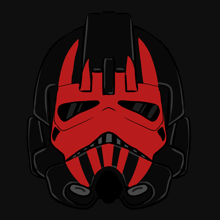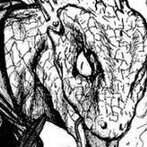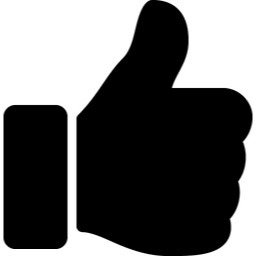-
Posts
114 -
Joined
-
Last visited
Profile Information
-
Pronouns
Male
Recent Profile Visitors
3,274 profile views
Almightygir's Achievements
Collaborator (3/10)
-
Rare
Recent Badges
-
Xioth started following Almightygir
-
Archangel35757 liked a post in a topic: FEATURE: OpenGL 3 Renderer
-
SomaZ liked a post in a topic: FEATURE: OpenGL 3 Renderer
-
minilogoguy18 liked a post in a topic: FEATURE: OpenGL 3 Renderer
-
Tempust85 liked a post in a topic: FEATURE: OpenGL 3 Renderer
-
perfect. i'll begin trolling immediately.
-
That didn't link to anything =[
-
Question: Do you guys have a discord/slack channel that i can hang out in?
-
toolbag 3 supports animations via geocaching, so while it won't natively run the animations, if you export the mesh + whatever test animation as fbx or alembic, you can view them in toolbag. that said, viewing animations is to see how a mesh deforms, not how a texture looks. if you want a solid PBR renderer to look at things before exporting to engine, that's what it's for. it's specifically designed to be middleware for pre-vis and lookdev while working in the iteration stages. oh and because it bakes textures (in realtime!!!!!!!!!!!) it's fucking awesome. anyway, all i'm saying is: updating a renderer is no trivial thing. and since there is already a previs tool that exists, it's a low priority (in my personal opinion as a member of the public).
-
AshuraDX liked a post in a topic: FEATURE: OpenGL 3 Renderer
-
SomaZ liked a post in a topic: FEATURE: OpenGL 3 Renderer
-
Because Marmoset Toolbag exists
-
SomaZ liked a post in a topic: FEATURE: OpenGL 3 Renderer
-
haha awesome dude! now for the fun part: Spherical harmonics
-
hey sorry, been at uni all day: Xycaleth is correct.
-
SomaZ liked a post in a topic: FEATURE: OpenGL 3 Renderer
-
eezstreet liked a post in a topic: FEATURE: OpenGL 3 Renderer
-
minilogoguy18 liked a post in a topic: FEATURE: OpenGL 3 Renderer
-
Since you'd just multiply one with the other in the shader, it makes more sense to do it directly in the texture, to avoid an additional texture call or using a texture channel you could reserve for something else.
-
Also these: https://www.marmoset.co/posts/physically-based-rendering-and-you-can-too/ <--- practical application https://www.marmoset.co/posts/basic-theory-of-physically-based-rendering/ <--- education on PBR theory (very useful to artists, but can get techy) https://www.marmoset.co/posts/pbr-texture-conversion/ <--- if you want to (try to) convert older assets to current gen, may be more work required than what's in the doc though. So the frostbyte guys have a "special" type of AO map, where they make the occlusion angles highly accute, which causes much tighter shadows in the map. They're in practice, the same thing... as in, they both affect the renderer the same way. Why do they do it though? Well, an AO map will usually have large, sweeping shadows (think of like... armpits, or between the legs and stuff). Often the lack of ambient light to these regions is enough to create odd looking shading. So by using cavity occlusion instead, they're limiting the lack of ambiance specifically to areas which have really deep geometric variance. Interestingly, Naughty Dog recently released a paper on Uncharted 4 which can help with this stuff too, by interpolating the baked AO details out at glancing angles. i wrote a blog post on this (have to keep a stupid fucking blog for my masters degree), if anyone wants to read it: https://leedevonaldma.wordpress.com/2017/02/19/keeping-things-unreal/ The math/pseudocode is: float FresnelAO = lerp(1.0, BakedAO, saturate(dot(vertexNomalWorldSpace, ViewDir))); as for nomenclature... It was a jarring switch industry wide, and a lot of people rebelled against it. But it really did make sense to use new terminology (ie: Albedo vs Diffuse, Reflectivity vs Specular) when considering the subtle differences. Sick! There's definitely something odd going on with the fresnel component though, it gets really really dark at the edges here, when really it should get closer to pure reflection instead.
-
you should rename the Specular RGB map to something else, Reflective or Microsurface would be better. Specular has an actual defined term in current industry usage. If you're using metal masks (which you are), then reflectivity = lerp(0.04, albedo.rgb, metalmask). if you're using a specular map, then reflectivity == specular.
-
Also, not sure of how your system is set up, but a common method of storing AO at the moment is to put it into the red channel of a packed texture map: Red = AO G = Roughness B = Metallic (not sure if this one applies, does your shader system use metalness or specular for reflective input?)
-
NO NO NO NO NO!!! AO is AMBIENT occlusion. it masks the AMBIENT contribution in the shader pipeline. by applying it directly to the albedo, you're basically sticking a finger up to the PBR system which is specifically designed to give you consistent lighting, by saying "i want permanent shadows in this exact position, fuck where your lights are".
-
Ah, okay so it's just a bent normal map, something i (character artist) give no hoots about
-
just curious, but wtf is "delux mapping"?
-
that's bad. we need both.










